Nevada polygons (part of 2)
The mode of increased secrecy and remoteness of the airfield from populated areas could not be better suited to test not only combat aircraft created under “black programs”, but also to ascertain the capabilities of the “likely enemy” aircraft. So, from the end of the 70-x here, simultaneously with the testing of the "unobtrusive" fighter-bomber, which was created under the program Have Blue, the program Constant Peg started. The purpose of the secret program "Constant Pig" was to study the Soviet fighters, identify their ability to conduct air combat and develop countermeasures. At the disposal of the pilots of the specially formed 4477 th test and evaluation squadron of the US Air Force “Red Eagles” at various times were the MiG-17, MiG-19, MiG-21 and MiG-23 aircraft. However, the “twenty-third” turned out to be “with a snap”; several American pilots crashed on fighters of this type.
After the end of the "cold war" the program "Constant Pig" was officially closed, but the interest of the leadership of the Air Force and the US Navy in the Soviet and Russian aircraft technology has not disappeared. In 90-s, dozens of Soviet-made aircraft were imported into the United States, including the MiG-29 and Su-27.
In addition to fighters, in 1990-2000-s, Soviet air defense systems were tested at the Tonopah training ground, including radar: P-18, P-19, P-40, 36-X6, army mobile SAMs: Strela-10 , Osa-AKM, Krug and Kvadrat, as well as air defense systems and air defense systems of the country's air defense forces: С-75М3, С-125М1. From the "fraternal" republics of the CIS in the United States sailed the air defense system "Top" and the air-defense system "Tunguska".
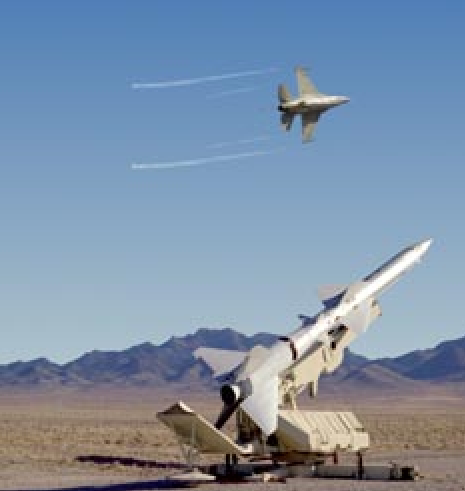
But the greatest value for the US military was represented by long-range missiles, the C-300PS and C-300В. Elements of these anti-aircraft systems are still stored in the vicinity of Tonopah Test Range Airport, which can be seen in satellite imagery.
Satellite image of Google Earth: elements of a C-300 AOS near the Tonopha airfield
Some time ago, the US military stated that it was winding down all military programs at the Tonopah airfield, except for research on nuclear security weapons... However, it seems that testing of new species aviation weapons and the search for methods of combating Russian air defense in this area did not stop. No aircraft are visible on the satellite images of Tonopah airfield. However, according to a number of signs, it can be concluded that the airfield is functioning.
For a long time F-117А Nighthawk fighter-bombers were based at Tonopah. In 2008, these planes were officially decommissioned, the most worn-out vehicles were “recycled”, and some were placed in storage.
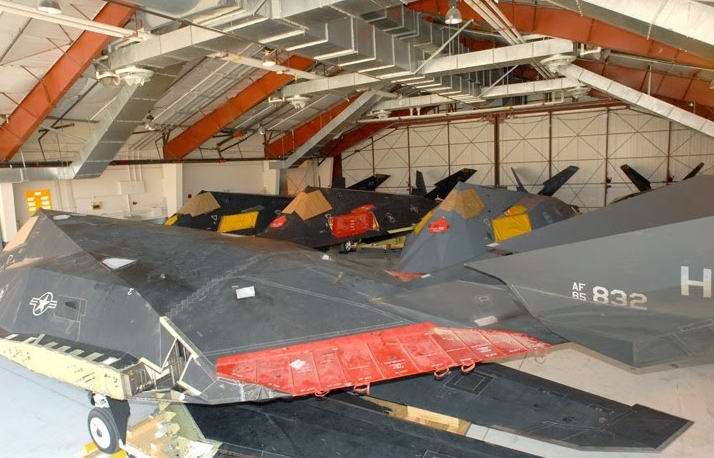
But, unlike other warplanes, they, like airplanes containing the secret technology of low radar visibility, were not sent for storage at Davis-Montand, but hid from eye to eye in the guarded hangars at the Tonopha airfield. In the fall of 2014, the spotters managed to photograph several F-117s that had flown from the runway at the Tonopah airfield. With what purpose the United States Air Force reanimated the retired "stealth planes" is not clear.
Information that single F-117As were flying in the area also came in 2015 and 2016. It is possible that stealth Night Hawk aircraft are used to test new types of airborne target detection equipment, including radar and infrared stations, or when working out anti-aircraft defense systems as part of a program to create sixth generation fighters, electronic warfare aircraft or stealth drones.
Another vehicle covered with a halo of mystery, whose presence has been observed at the Tonopah airfield, is the NT-43A. This aircraft was created on the basis of the T-43A - modification of the Boeing 737-200, designed to train pilots and navigators of transport aircraft, tanker aircraft and strategic bombers.
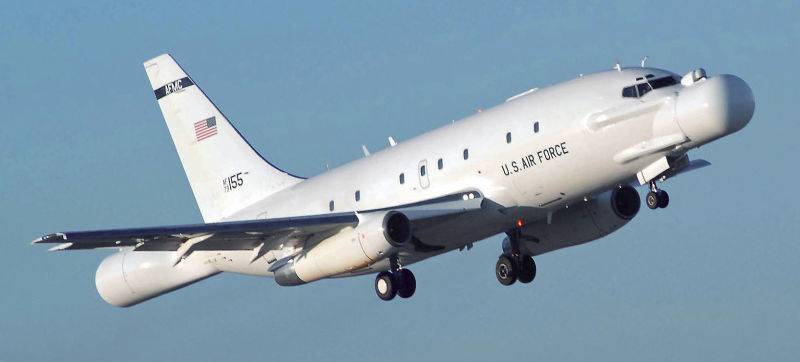
In 2001, one of the T-43Аs, transferred to 1999 in the “bone store” in the “Davis-Montan”, after the repair was converted into a flying radar stand. The aircraft acquired a unique appearance, in the tail section and in the nose of the aircraft appeared massive radar radomes and optoelectronic sensors.
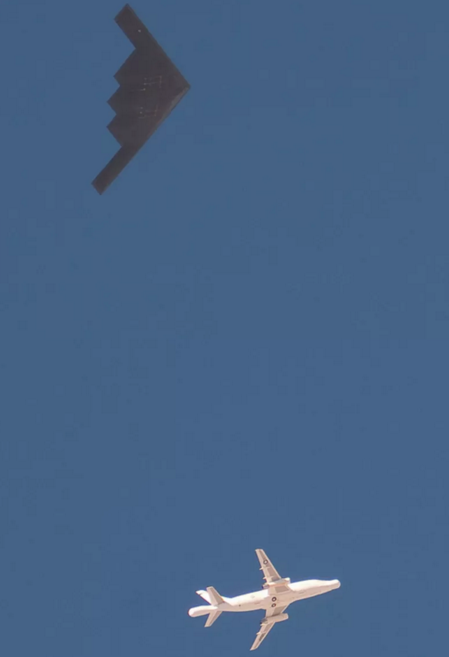
Representatives of the United States Air Force respond evasively regarding the appointment of NT-43A. Apparently, this special-purpose aircraft participates in a number of programs relating to the measurement of physical fields of combat aircraft, which is directly related to the problem of reducing radar, optical and thermal conspicuity. In the past, the aircraft NT-43A was repeatedly observed in a company with subtle F-117A and B-2A.
The 13 km northeast of Las Vegas is the Nellis Air Force Base (Nellis Air Base), its area is 42 km². In addition to the implementation of various kinds of test programs, one of the main functions of the air base is the training of American and foreign fighter pilots. The base also hosts a regional command “Center for Air and Space Operations”, which is responsible, among other things, for its air defense zone. In the "Nellis" is the US Air Force Warfare Center ("Center of the combat use of the US Air Force"). There are regularly held various international exercises involving aircraft and pilots of the Air Force of other countries. In the past few years, the airbase was visited not only by aircraft in service with the Air Force and the US Navy, but also such “exotic” as: A-4 Skyhawk, Mirage 2000, Dassault Rafale, Panavia Tornado attack aircraft.
Satellite image of Google Earth: A-4 Skyhawk attack aircraft in the parking area of Nellis airbase
Satellite image of Google Earth: Mirage 2000 fighters parked at the Nellis airbase
After the official closure of the Constant Peg program and the elimination of the 4477 test-assessment squadron, research into the capabilities of Soviet-made aircraft in the United States did not stop. Moreover, after the collapse of the USSR, there was a mass of people willing to share the “excesses” of the Soviet legacy in the form of MiG-29 and even Su-27. To keep it secret now there was no need anymore. Soviet-made airplanes were officially bought directly by the US government or through front companies in the countries of the former Warsaw Pact and in the former Soviet republics of the USSR.
Being at the Nellis airbase of foreigners undergoing flight and technical training, as well as being close to Las Vegas, does not give any way to hide the flights that were at the MiG-21, MiG-23 and MiG-29 airbases. Apparently, Soviet-made fighter jets flew pilots of the 57 tactical group Aggressor (57 ATG), which is part of the 57 th wing (57 WG). This operational unit of the US Air Force Combat Training Center is tasked with ensuring the conduct of flight exercises, maintaining flight fighter pilots at an adequate level, and simulating the actions of a potential enemy combat aircraft.
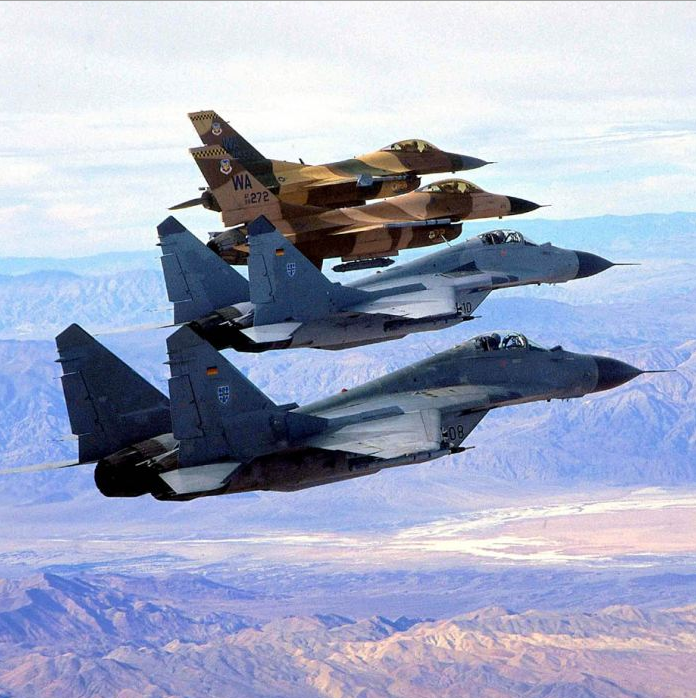
The 57 e-wing also includes ground radio-technical units, which during the exercises depict the actions of anti-aircraft systems of Soviet and Russian production. To impart increased reliability and approximation of conditions to combat, at the disposal of ground units there are radars and guidance stations of the Soviet air defense missile systems. Particular attention is paid to electronic suppression, American pilots learn to operate in conditions of unstable radio communications, relying mainly on inertial navigation aids. Since the US command quite reasonably believes that in the event of a collision with a strong enemy, radio communication, the channels of the TACAN satellite and pulsed radio navigation system are likely to be suppressed.
Currently, the 57 th tactical group Aggressor consists of two squadrons: the 64 and 65. It is very honorable to serve in these squadrons; the most highly qualified pilots with a large attack and experience in real combat are selected here. The 64 squadron is armed with F-16C / D fighters (imitating MiG-29), and X-NUMX F-65C / D (imitating Su-15).
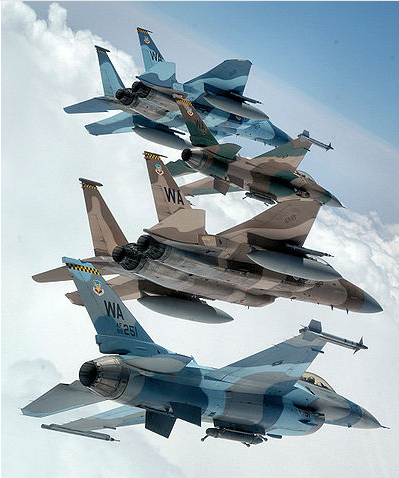
The planes of the 57 tactical group are specially prepared for conducting close air battles, they are lightened and painted in the colors of the “probable enemy”. In aviation units, depicting enemy aircraft in training air battles, there was always a high level of accidents, as their highly skilled pilots fly within the limits of the capabilities of the aircraft technicians and strive to win at all costs in training air combat. So, 30 July 2008, in the air, faced two "Eagle" from the 65-th squadron. One pilot managed to eject, while the other died.
Google Earth satellite image: F-15C X-Numx fighter squadrons of the Aggressor atypical for the United States Air Force
The 57 th wing of the Nellis airbase, in addition to the aggressors, includes the aerobatic team of the US Air Force Thunderbirds - "Burevestnik". It was created in 1953 year and is one of the oldest in the world. Since 1982, the Petrels have been flying F-16 Fighting Falcon fighter jets.
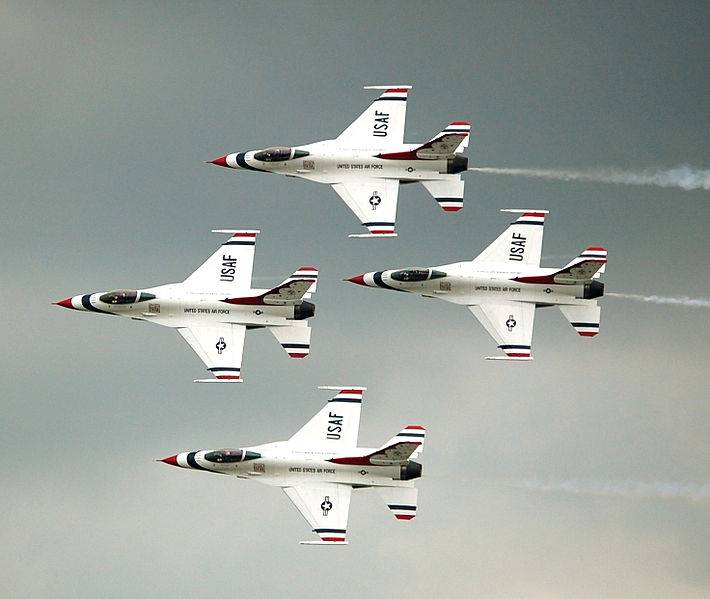
Currently, the pilots of the group are specially modified F-16C. Aircraft facilitated and dismantled weapons. This is connected not only with the desire to increase the thrust-to-weight ratio and maneuverability of the piloting machines, but also with the fact that the governments of a number of countries object to the presence of American combat aircraft on their territory.
Satellite image of Google Earth: F-16C of the Petrel aerobatic team at the Nellis airbase
Given that the “Petrels” often perform abroad, the presence of even embedded 20-mm cannons on board aircraft could cause unnecessary complications. Flight F-16C painted white with red and black stripes on the aerodynamic surfaces. Aircraft have a distinctive appearance and are easily identified on satellite imagery.
In addition to the 57 air wing, other units are located at the Nellis airbase. The 422 Test Assessment (Test) Squadron (422 TES) is engaged in testing, pilot operation of the new aircraft and development of combat use. The 422 Squadron has the following aircraft: F-16C, F-15С, F-15Е, F-22A, F-35A fighter jets, A-10С attack aircraft and ОА-10С and OV-10С attack aircraft.
In addition to its operational testing activities, 422 TES is also responsible for developing and testing new tactics for the US Air Force. Pilots of the test-assessment squadron are developing tactics for the use of new types of aircraft and recently adopted weapons of aviation. In addition, on the basis of the obtained intelligence information, measures are being developed to counter foreign air defense systems.
Pilots of the 422, 64 and 65 squadrons regularly take part in air combat training with foreign-made fighters. This allows you to adequately and promptly respond to emerging threats and work out the tactics of air combat. In addition to conducting test missions, practicing tactics and combat use, and simulating enemy aircraft, the F-16C / D, F-15C / D and F-22A fighters are involved in air defense missions in the North American continent.
Testing of the combat use of aviation weapons takes place at the vast NAFR test site (Nellis Range Air Force, the Nellis test site), which is larger in area than the Nevada nuclear test site. The management of the Nellis test range is carried out by the NTTR command center - Nevada Test and Training Range (Nevada Training and Training Center). Over the years, several runways were built at the test site that simulate enemy airfields, target complexes with various types of structures, trains, air defense systems, bridges, armored columns and long-term defense units. When constructing these targets, the designers tried to reproduce the real objects in the USSR, the People's Republic of China, the DPRK and the countries of Eastern Europe. For example, at the beginning of the 80-x, the Soviet Juterb airfield near Brandenburg in the GDR was reproduced in detail at the test site. Since the middle of the 50s, more than 1200 ground targets have been built and installed at the Nellis test range.
At the runways and in the airfields caponiers, the decommissioned aircraft are deployed as targets. These are not only American-made airplanes, in some places there are gliders of Soviet aircraft: MiG-21, MiG-29 and Su-22.
Satellite image Google Earth: decommissioned aircraft placed in caponiers as targets
On flat areas of mountain ranges in the vicinity of the landfill, to ensure flight safety, control of combat use and coordination of actions, there are 4 stationary radar stations and communication centers. During large-scale exercises and when testing new types of aviation weapons, mobile AN-TPS-43 and AN / TPS-72 mobile radars are deployed in certain areas of the test site. In the past, to control the airspace above the landfill, it was planned to deploy the LASS aerostat radar system (Low Altitude Surveillance System, low-altitude observation system) with an 300 km detection range, but due to financial constraints these plans were abandoned.
Satellite image of Google Earth: fixed radar station and communications center in the vicinity of the Nellis airbase
At the moment, the control of the air situation in the area is carried out by stationary three-coordinate radar with AFAR AN / FPS-117 (stationary version AN / TPS-59). The AN / FPS-117 radars differ from the mobile version by increased radiation power, as well as enhanced detection capabilities for tactical and operational-tactical missiles. The detection range of high-altitude targets for radar AN / FPS-117 can reach 470 km, targets flying at low altitude - 100 km. Stationary radars are installed on capital concrete foundations, to protect against wind and precipitation, their antennas are placed under a radio-transparent dome with a diameter of about 20 meters.
In the past, various UAVs were tested at the Nellis airbase, but in order to ensure secrecy in 2005, the test of the UAVs was transferred to the Creech Air Force Base (Krych Air Base) in Clark County, Nevada. Here is the Joint Unmanned Aerial Systems Center of Excellence, a joint pilot center for unmanned aircraft systems. At various times, the MQ-1 Predator, MQ-1C Gray Eagle and MQ-9 Reaper UAVs, as well as their control and data relay equipment, were tested and tested at the Cric airbase.
Before being sent to the “hot spots” at the “Krich” airbase, American drone operators are trained and trained. The air base is the “home” for the 432 air wing, where the Predators and the Reapers are in service. The equipment, weapons and personnel of this unit are constantly on missions in different parts of the world. But most often it is the Middle East and Afghanistan.
On satellite images, the airbase looks almost abandoned. In the extensive parking areas, only a few C-130 military transport vehicles and a few UAVs can be observed. In June 2011, a commercial satellite flying over the airbase, made a rare shot - fixed drone taking off from the runway.
However, the airbase keeps a lot of secrets, on the outskirts of the runway you can observe the aircraft, strongly resembling the MiG-29 fighter. A model of this, or a Soviet-made fighter abandoned after testing, cannot be established from the existing not very high-quality image.
Approximately 10 years ago in the area, an unusual aircraft was observed by observers, following the “flying wing” scheme, in many respects resembling the B-2A reduced size stealth bomber. Later it became known that it was a Lockheed Martin RQ-170 Sentinel UAV.
This drone is also in service with the 432 th wing. According to a number of experts, the RQ-170 UAV is equipped with optoelectronic surveillance systems and possibly an AFAR radar at the bottom of the fuselage. According to information made public in 2009, the RQ-170 has a more complex device than the MQ-1 and MQ-9 UAVs, and is much less noticeable in the radar and IR ranges. This was achieved thanks to the form and special composite coating. For the first time, the "Guard" was used in a combat situation in 2007 year. It is reported that the unit, based on an Afghan airfield in Kandahar, provided information to US special forces during the operation to physically eliminate Osama bin Laden. In December 2011, one RQ-170 from the 432 air wing, which was lifted into the air in Afghanistan, was lost. Soon, Iranian television showed the plot, which demonstrated the American UAV RQ-170 without visible damage. Subsequently, the Iranian authorities refused the request of the United States to return the drone.
NAS Fallon (Naval Air Station Fallon, Fallon Naval Air Station) is located in the western part of Nevada, near the town of Fallon. After winding down the program Constant Peg, the command of the US Navy expressed a desire to continue on a regular basis to train pilots of deck aviation to work out methods of maneuverable air combat, including with the involvement of foreign aircraft. This was due to the fact that fighters based on aircraft carriers, the likelihood of clashes with airplanes of other countries' Air Force is much higher than in the US Air Force. After the transfer of the Air Station Naval Air Base Miramar (Miramar) to the US KMP, the Center for In-Depth Combat Training of Fighter Pilots of the US Navy, known as TORGUN, relocated to Fallon air base in 1996. Prior to this, the Naval Air Base in Nevada was a branch of the Miramar Training Center in California.
Compared with the centers of in-depth training of fighter pilots of the Air Force, the naval aviation pilot training school “Topgan” is much more famous thanks to the eponymous film with Tom Cruise in the title role. For the sake of fairness, it should be said that the scope and intensity of air battles in the vicinity of Fallon airbase are generally much higher than at Nellis airbase. This is due to a different approach to the training of pilots of the Air Force and Navy. Pilots 64 and 65 th squadrons of the Air Force are involved in training fights with American and foreign pilots, staying at the airbase "Nellis" on their aircraft. Usually these air battles in squadrons last for several days. Also, in Nellis, advanced training courses were organized for officers of the level of squadron commanders and above, lasting several months, with in-depth studies of information security, air combat tactics, aerial reconnaissance techniques, EW and overcoming air defense.
At the Naval Air Base in Nevada, the focus is on enhancing the personal skills of ordinary pilots. The duration of the training course at the Topgan school is usually 9 weeks. During this time, the tactics of air combat of the fighters of the Russian Aerospace Forces and the PLA Air Force are studied in practice. In the course of training, a variety of combat scenarios are considered, including naval pilots who are taught to act in situations where they do not have numerical superiority.
In these conditions, the information awareness, which should be provided by the crews of AWACS aircraft, is of particular importance. Guidance officers and pilots of E-2 Hawkeye in NAS Fallon all year round learn to interact with deck fighter pilots, coordinating their actions and informing them about the air situation.
At the moment, the only type of fighter of carrier-based aviation in the US Navy is F / A-18 of various modifications. A heavy double-deck fighter with variable geometry of the F-14 Tomcat wing was decommissioned in the US Navy in September 2006, while the deck-based fighters of the 5 F-35C generation in significant quantities are not yet in service.
Satellite image of Google Earth: F / A-18, F-16А fighter jets and E-2C DRLO fighter planes at Fallon airbase
NAS Fallon permanently bases around 60 aircraft, including F / A-18C / D Hornet and F / A-18Е / F Super Hornet fighters, EW EA-6 Prowler and EA-18 Growler aircraft, DRLO E planes -2C Hawkeye. In the past there were exploited attack aircraft A-4E / TA-4J Skyhawk, A-6E Intruder and A-7 Corsair II, interceptors F-106A Delta Dart, fighter F-5E / F Tiger II, F-16N Fighting Falcon, carrier-based fighter F -4 Phantom II and F-8 Crusader, F-14 Tomcat, supersonic TC-TNXX Talon, Soviet MiG-38F, MiG-17bis, MiG-21MF and MiG-23, as well as Polish PZL Lim-29 and XL-5 Polish MFXXMF and MiG-6. 17 (modifications of the MiG-XNUMX).
Until 1996, at the Fallon airbase, pilots of deck-based strike machines mainly practiced techniques for overcoming the enemy’s air defense system. For this purpose, a large target complex was built 40 km south-west of the air base - a runway with taxiways and caponiers, in which decommissioned aircraft, trucks, Tanks and armored personnel carriers, prototypes of the S-75, S-125 and "Circle" air defense systems. In the 80s, not far from the target field, several stations appeared imitating the work of Soviet radio engineering systems used to test electronic countermeasures. In 1990-2000, the development of this direction of combat training continued (after Soviet-made radar equipment was delivered here). On it worked out the crews of the "flying jammers" EA-6 Prowler and EA-18 Growler. About 6 times a year, exercises are organized at the training ground to suppress air defense systems and destroy ground targets.
To control flights during the pilots' execution of air defense breakthrough exercises and air combat training, the 858-I radar squadron was used at the air base using radars: AN / FPS-35, AN / MPS-7, AN / FPS-6, AN / FPS-14 and AN / FPS-66A. In addition to monitoring the air situation over the range, the radar data was on alert, as part of the North American air defense system. In connection with the end of the Cold War, the 858-I rle was disbanded. The AN / FPS-66А type radar, installed in the northwestern part of the airfield on a concrete base painted in red and white squares, is still in working condition and is periodically used to monitor the air situation and guide flights around the base.
Another radar station in the AN / FPS-117 and ARSR-4 radars is located in 180 km north of the airbase, dominating the terrain on top of a mountain. Three-coordinate stationary radar ARSR-4 is a civilian version of the AN / FPS-130 radar with a range of detection of large high-altitude targets 450 km.
From the very beginning of the Topgan school, the command of the US Navy raised the question of finding worthy “sparring partners” for conducting training air fights. To give more realism, it was quite natural to want to use unknown planes naval pilots. Initially, the F-21A with a triangular wing, which had good acceleration characteristics, acted as the MiG-106. Subsonic MiG-17s were depicted by A-4 attack aircraft, at low altitudes in a horizontal maneuver, the Skyhawks turned out to be quite a strong enemy. After a short period of operation, the F-106A was replaced by the T-38 TCB, and they, in turn, were F-5E / F fighters.
The Tiger 2 fighter service at Fallon airbase continued for about 25 years, aircraft of this type were present here five years ago. The US Navy is still continuing to operate the F-5E / F, but they are now based on other airfields. A few years ago, a party of F-5E / F fighters built at the end of the 70-s was bought out in Switzerland. After the repair and modernization of the aircraft transferred to the squadron of the Navy and the USMC to simulate the enemy aircraft.
Simultaneously with the A-4E attack aircraft and their two-seater TA-4J and F-5E / F fighter jets, various types of MiG-17F and MiG-21 were used in combat training. Judging by the satellite images of the MiG-21 and MiG-29 flew here before the 2007 year. At the beginning of the 90's, the F-5E / F light fighters complemented the modified F-16N. These invested cars converted from fighter aircraft of the first series of F-16A. Thus, the school "Topgan" became the first and only aviation part of the US Navy, which operated single-engine F-16.
However, due to intensive use at the moment, all F-16N are written off. Even before the development of a designated flight resource on aircraft subjected to significant overloads during training air battles, cracks were found on the planes and tail, which made flights unsafe. After the cancellation of the F-16N, their place at the Fallon airbase was taken by the F-16A. Aircraft with a relatively small scale were taken from the storage base at Davis-Montan, they underwent a refurbishment at the Tucson airbase, where weapons and suspension units were also removed from the fighter jets, communications and navigation equipment were modified, and the fuselage and wings were reinforced. F-16 fighters operated at the Topgan Aviation School carry unusual colors uncharacteristic for US Air Force and Navy fighters.
Google Earth Satellite Image: The Fallon Air Base Museum Exposition
At the Fallon airbase there is an aviation museum - Naval Air Station Fallon Air Park. Funding for the museum at the airbase with limited access to civilians is carried out mainly by the US Navy. To visit the museum, you must submit an advance request by e-mail. The museum exhibits, in addition to American aircraft operating at the air base, there are Polish PZL Lim-5 and PZL Lim-6, Soviet MiG-17F, MiG-21bis, MiG-23МФ and MiG-29. In total, the exposure of more than 30 aircraft, including quite rare machines F-5E and F-16N.
Based on:
http://digital.library.unlv.edu/ntsohp/
http://www.dreamlandresort.com/info/ttr.html
http://warfiles.ru/show-49838-aviabaza-nellis-vvs-ssha.html
http://www.globalsecurity.org/military/facility/nellis.htm
http://www.popmech.ru/technologies/7978-nezakrytyy-kosmos-poligon-s-vidom-na-budushchee/
https://theaviationist.com/tag/creech-air-force-base/
http://www.globalsecurity.org/military/facility/fallon.htm
http://www.aviationmuseum.eu/World/North_America/USA/Nevada/NAS_Fallon/Air_Park.htm
http://www.dreamlandresort.com/info/exercises.htm
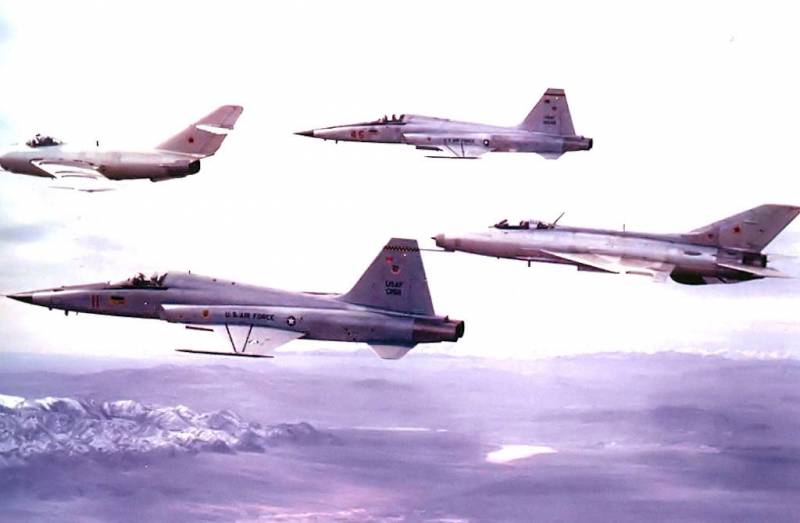
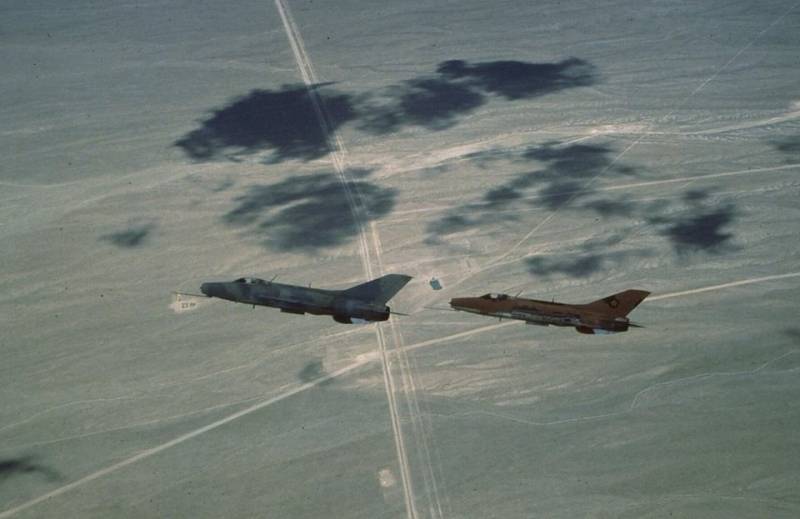
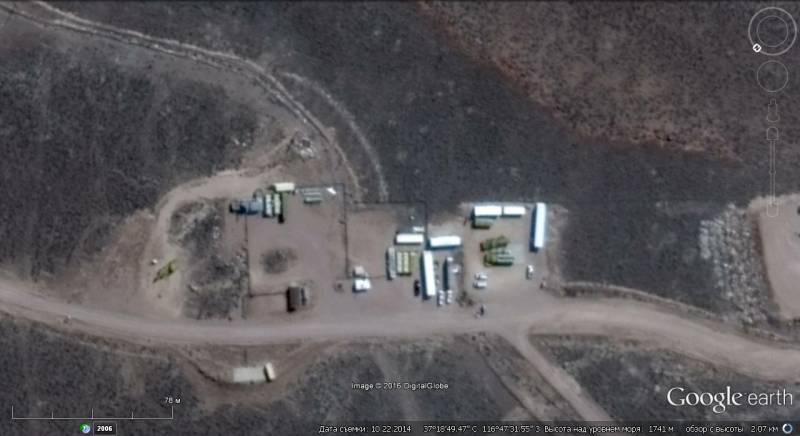
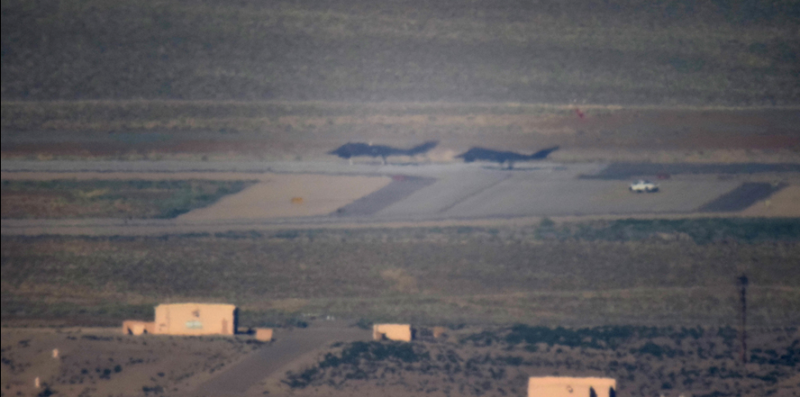
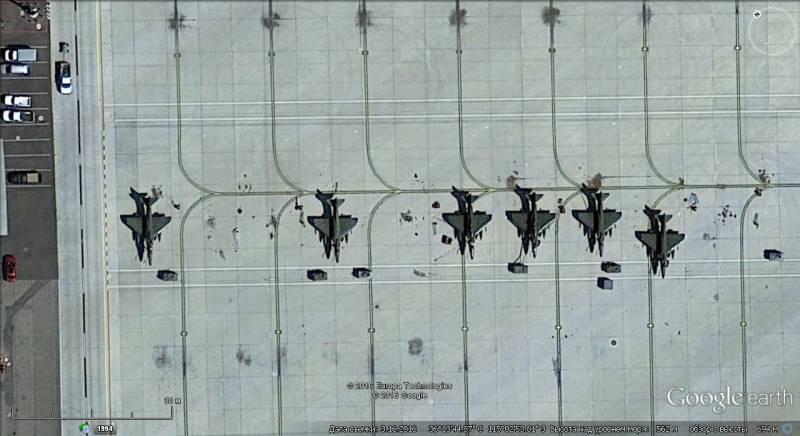
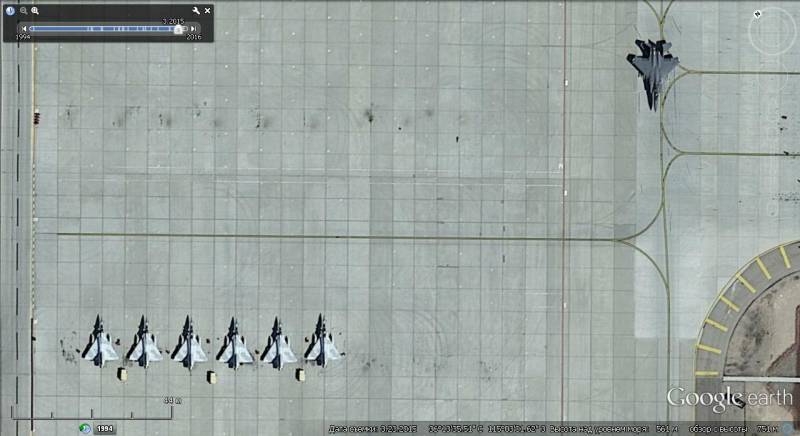
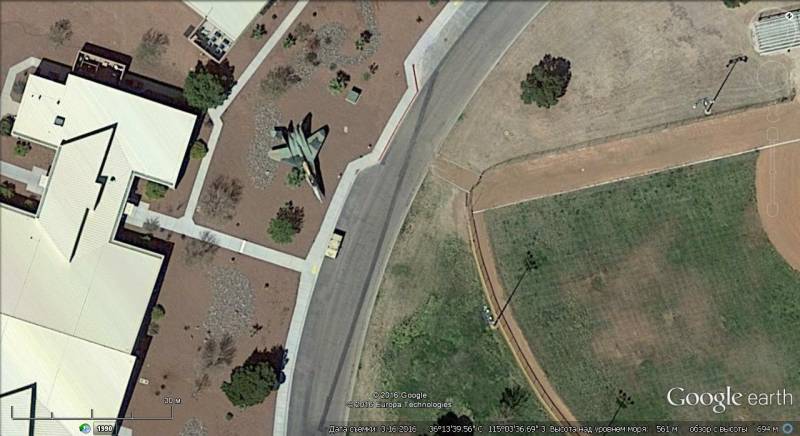
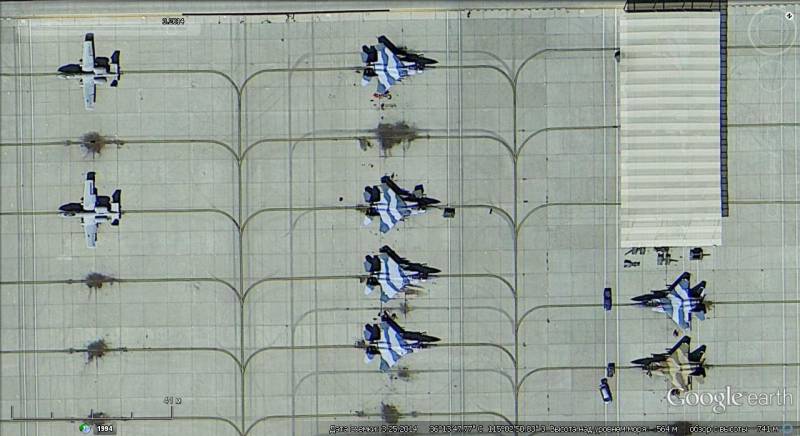
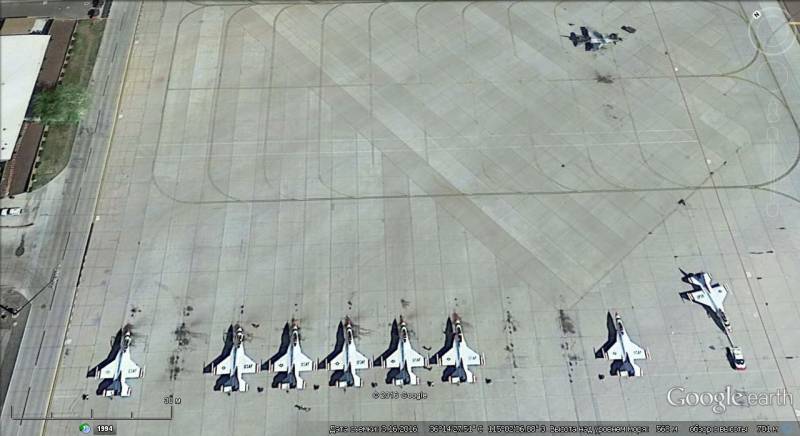
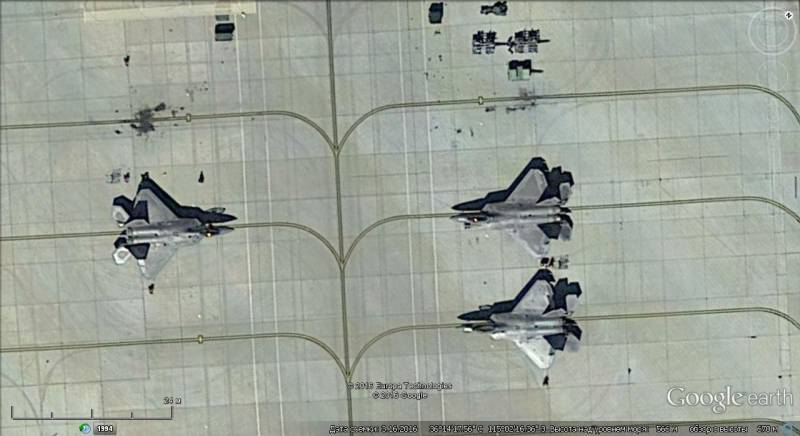
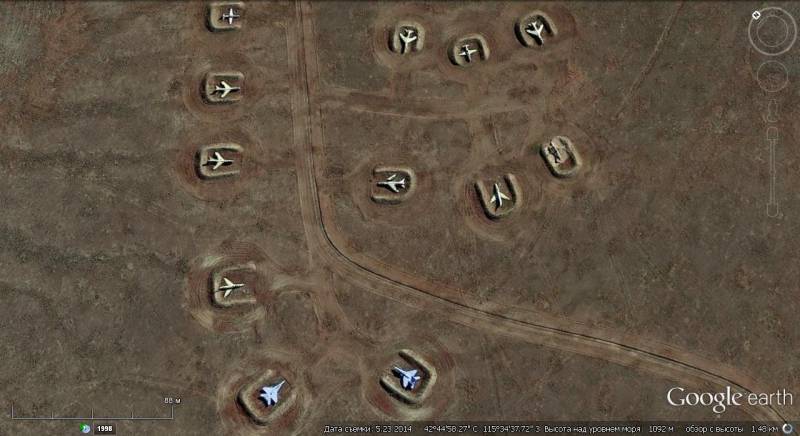
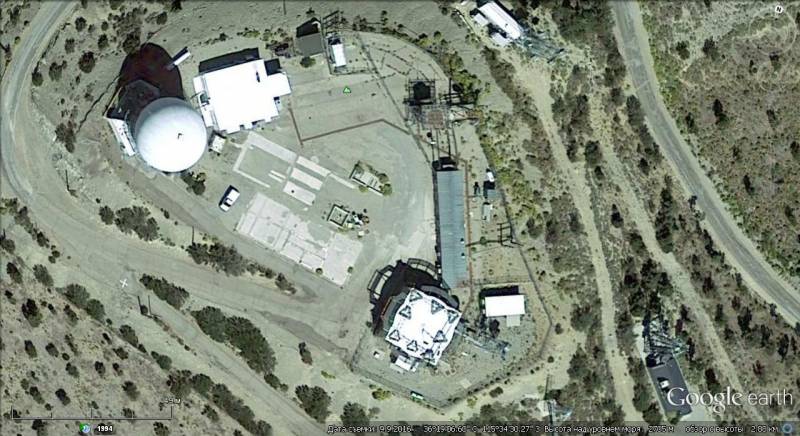
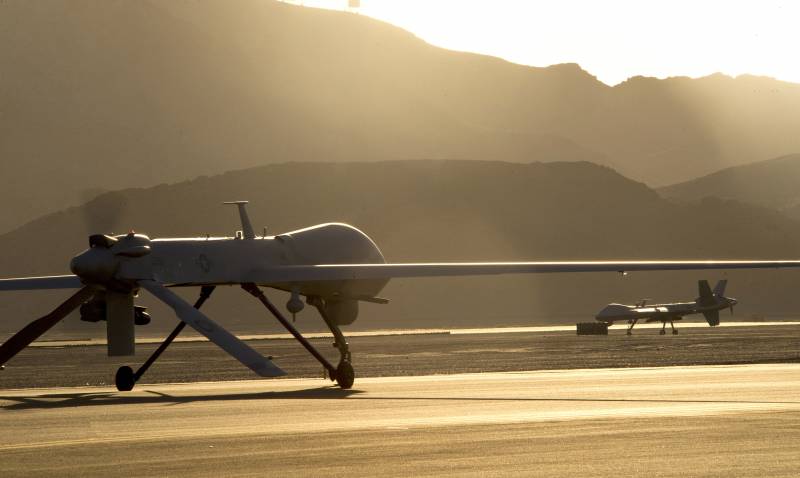
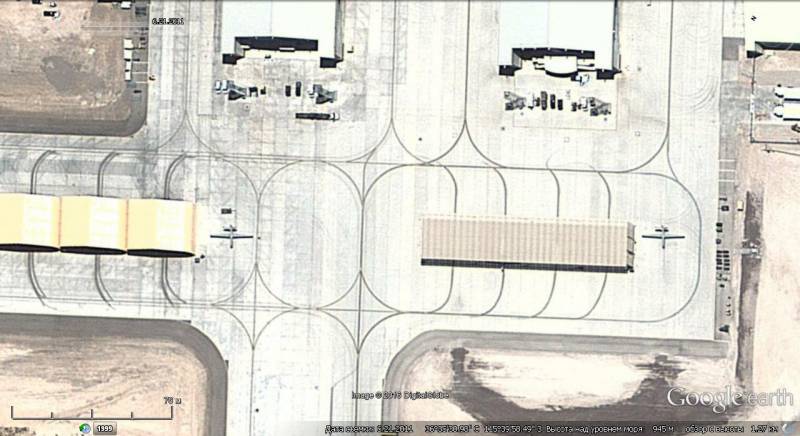
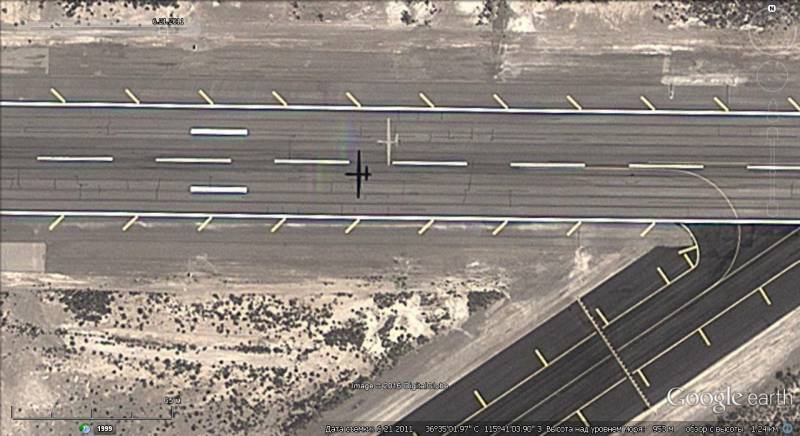
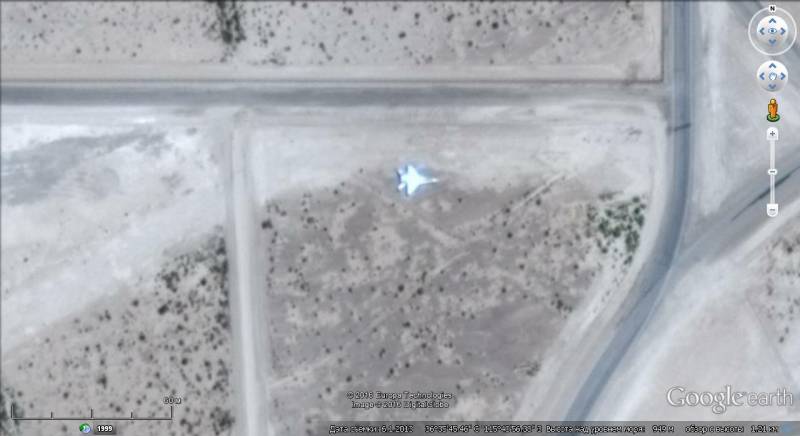
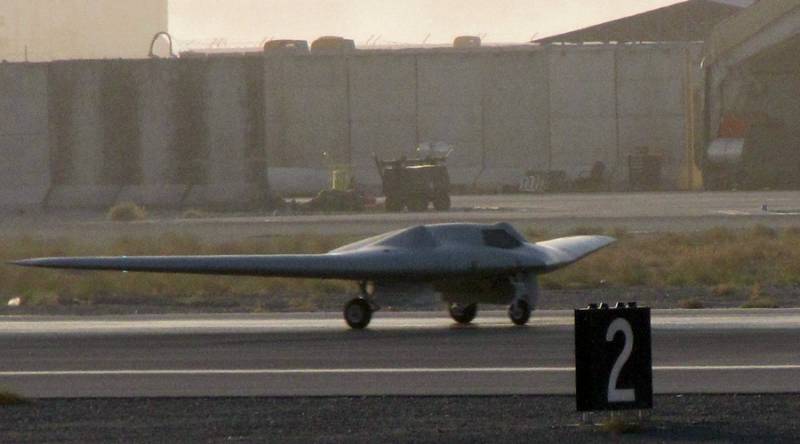
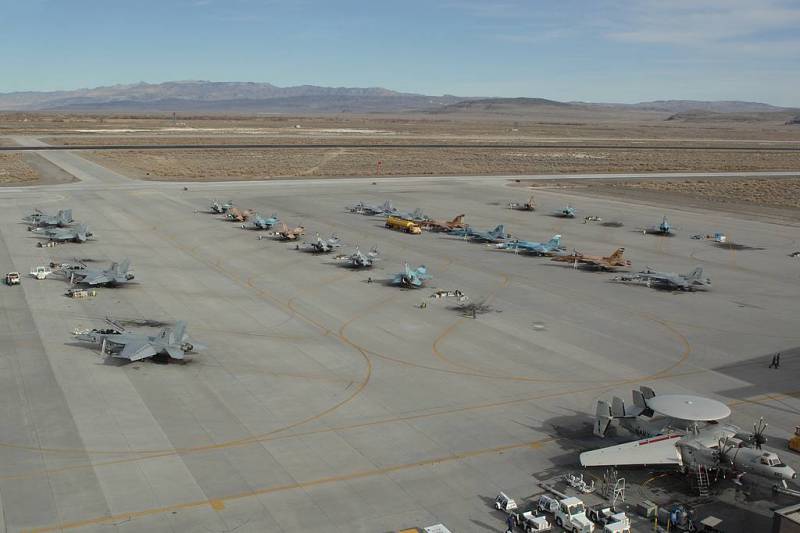
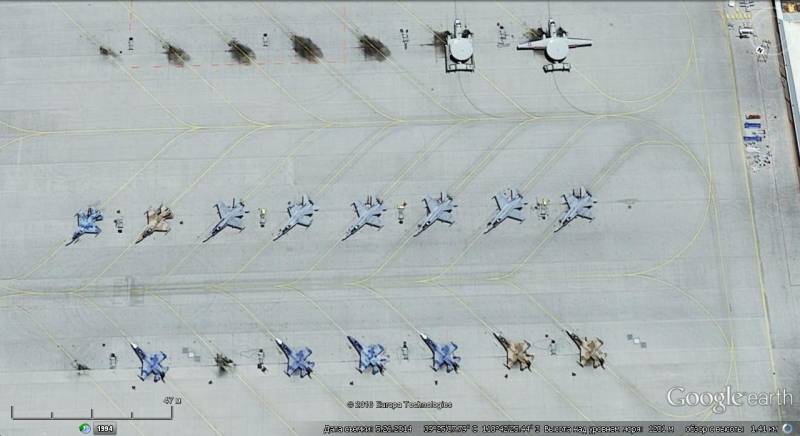
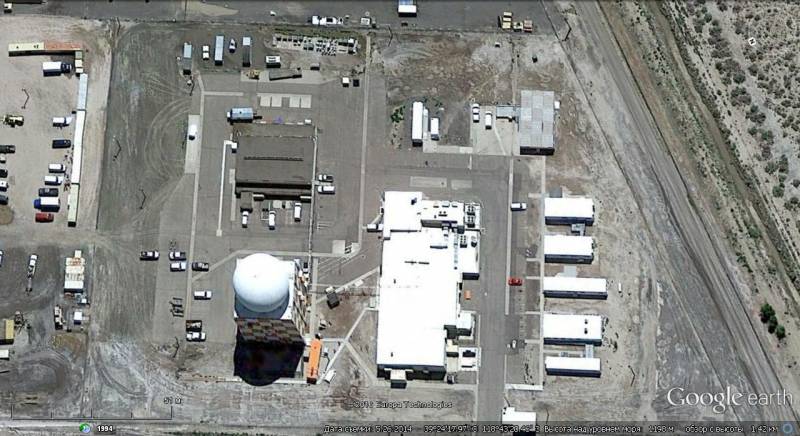
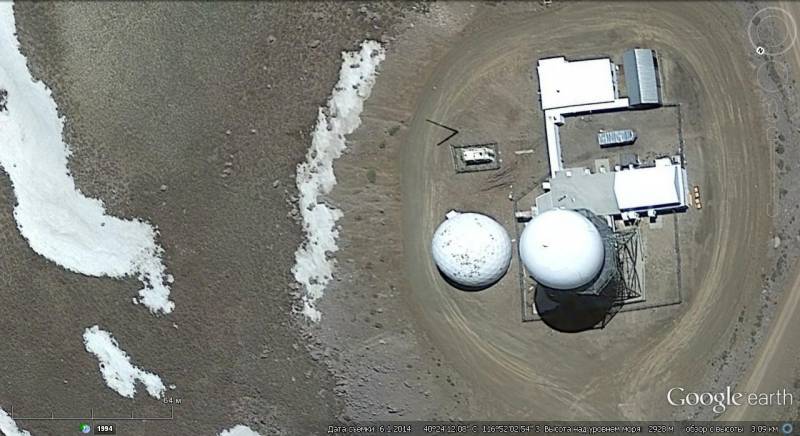
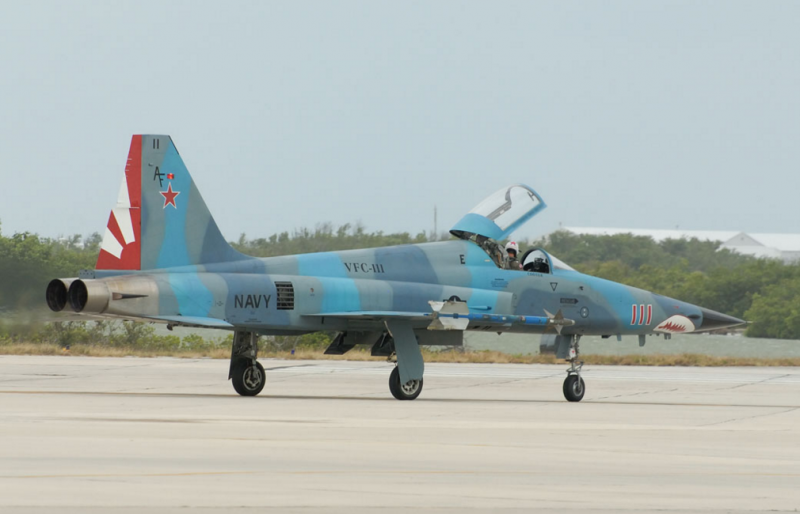
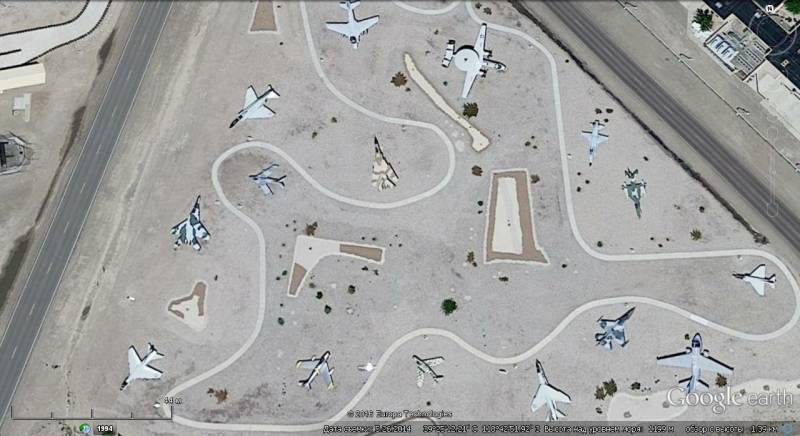
Information